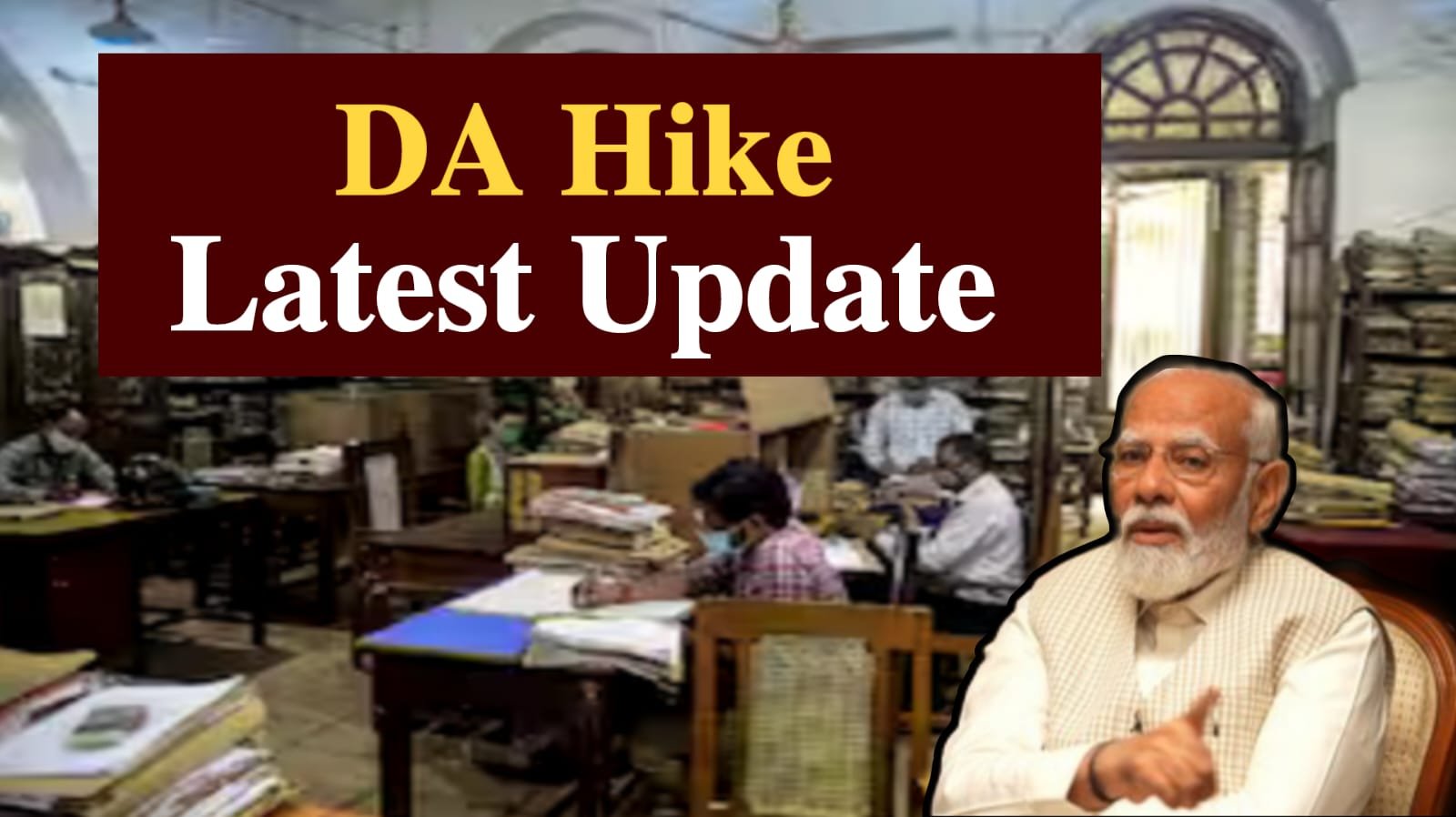DA Hike : If you are a central government employee, a significant development has emerged that directly affects your salary and benefits. According to multiple media reports and sources, the government is likely to reduce the expected hike in Dearness Allowance (DA), delivering a disappointing blow to employees ahead of the implementation of the 8th Pay Commission. Let’s explore this issue in detail below.
DA Hike : Possibility of a Lower DA Hike Before 8th Pay Commission
The government, as per recent reports, may increase DA by only 2%, contrary to the earlier expectation of a 3% to 4% increase. This has come as a surprise to many, especially since inflation and cost of living have been steadily rising. A mere 2% hike, when compared to the actual rate of inflation, could be seen as inadequate and may not match the expectations of over 47 lakh central government employees and 69 lakh pensioners.
Previously, in March 2024, the central government had approved a 3% hike in DA, taking it from 50% to 53%, effective from July 1, 2024. Now, instead of another similar increase, the government is contemplating just a 2% hike — increasing the DA from 53% to 55%. Though this may sound minor, the cumulative effect on salaries is substantial, especially for lower- and mid-level employees.
DA Hike : When is the DA Increased and How is it Calculated?
The Dearness Allowance (DA) is revised twice a year — once in January and again in July. These revisions are based on the changes in the All India Consumer Price Index (AICPI) for the previous 12 months. The purpose of DA is to offset inflation and protect the real income of employees and pensioners.
The formula used to calculate the DA is:
DA Percentage = [(Average of AICPI for past 12 months – 115.76) / 115.76] × 100
This formula was adopted by the government in 2006 to standardize the calculation of DA and Dearness Relief (DR) for pensioners.
Official announcements for DA hikes are typically made in March (for January revision) and September (for July revision), after the Cabinet Committee, headed by the Prime Minister, approves the proposal.
DA Hike : How Much Will Salary Increase with 2% DA Hike?
Let’s take a practical example to understand the financial impact of a 2% DA hike:
-
Suppose an employee has a basic salary of ₹18,000.
-
Currently, with 53% DA, they receive ₹9,540 as Dearness Allowance.
-
With a 2% increase, DA will become 55%, which means they will now get ₹9,900 — an increase of ₹360 per month.
-
Annually, this amounts to an extra ₹4,320.
Now, if the DA were increased by 3% instead of 2%, the new DA would be 56%, and the allowance would rise to ₹10,080, resulting in a monthly increase of ₹540 and an annual hike of ₹6,480.
Although these amounts may seem small in isolation, they become more significant across a large workforce and in the context of stagnant real wages.
DA Hike : Impact on Pensioners
Just like employees, pensioners also receive Dearness Relief (DR), which is revised on the same pattern and schedule as DA. So, any decision to reduce the expected DA hike will equally affect the retired central government employees, many of whom depend solely on pensions and related benefits.
DA Hike : Introduction of the 8th Pay Commission
The 8th Pay Commission is expected to be announced in January 2025, as the 7th Pay Commission is set to expire on December 31, 2025. The implementation of the 8th Pay Commission is likely to be effective from January 1, 2026.
The Pay Commission is responsible for reviewing and recommending changes in the salary structure, allowances, and pension for central government employees and pensioners. However, the terms of reference, rules, and members of the 8th Pay Commission have not been officially declared yet.
There is growing anticipation around what changes the 8th Pay Commission will bring, especially in light of economic shifts, inflation, and rising costs of living. Until it is implemented, DA revisions remain the only mechanism through which employees receive adjustments to their income.
Why a Lower DA Hike Feels Like a Setback
Central government employees had been expecting at least a 3% to 4% DA hike in the upcoming round due to the continuous rise in inflation and increased consumer prices. However, a 2% hike is now being projected in several media reports, which is far less than anticipated.
The decision to keep the hike minimal might be part of a larger fiscal strategy by the government, possibly to control expenditure ahead of major financial reforms or in preparation for the 8th Pay Commission’s recommendations. However, from the employees’ perspective, this feels like a temporary financial setback, especially for those at lower pay levels or those nearing retirement.
Conclusion
In summary, while the central government is expected to increase DA by 2% this September — bringing it up to 55% — the hike is smaller than initially hoped. With the 8th Pay Commission on the horizon, employees had expected a more generous increment in Dearness Allowance as a bridge until the new pay structure is implemented in 2026.
The final decision on the DA hike will be taken in an upcoming Union Cabinet meeting chaired by Prime Minister Narendra Modi. Whether this modest increase is a temporary measure or part of a longer-term plan will become clear in the coming months.
For now, central government employees and pensioners will have to wait and watch — both for the official DA notification in September 2025 and for further announcements regarding the 8th Pay Commission in early 2025.



